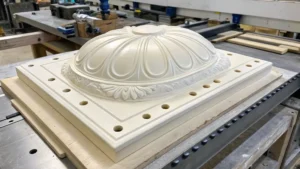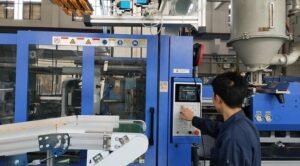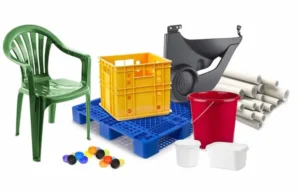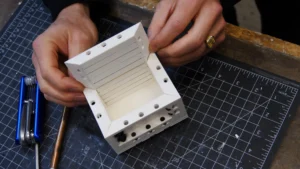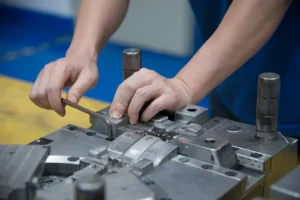Introduction
As industries evolve and strive for greater productivity, smart mold technology is emerging as a groundbreaking innovation in manufacturing. This technology combines advanced sensors, automation, and data analytics to optimize mold performance, reduce downtime, and ensure higher-quality production. Smart molds are revolutionizing the way manufacturers approach mold maintenance, efficiency, and overall output, offering a glimpse into the future of manufacturing.
In this article, we’ll explore how smart mold technology is transforming production lines, the benefits it brings to manufacturers, and its potential impact on various industries.
What is Smart Mold Technology?
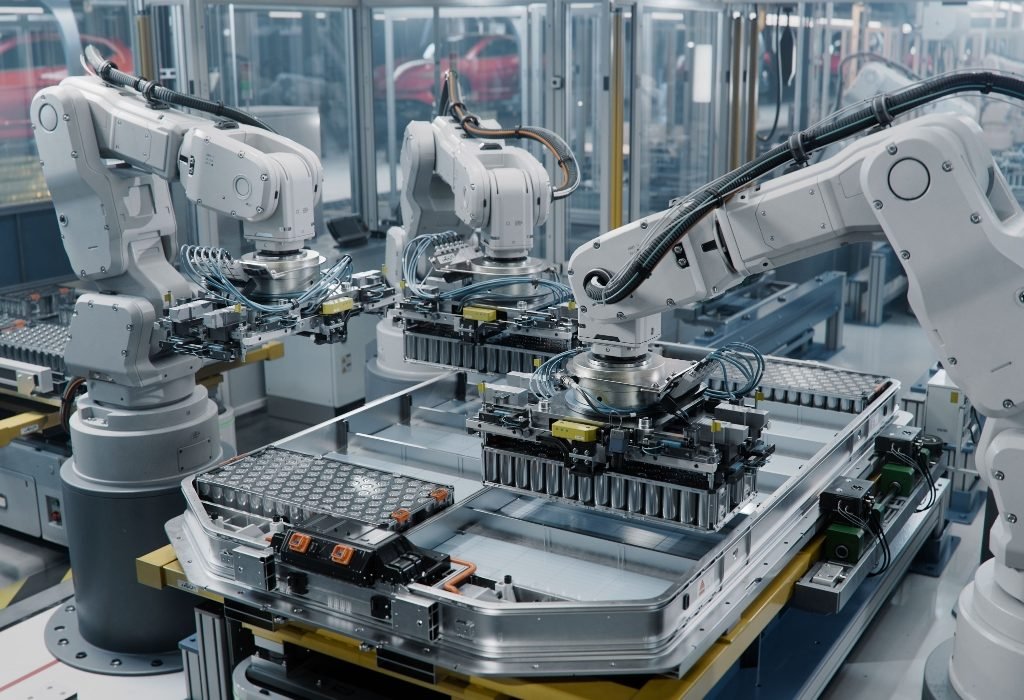
Smart mold technology refers to the integration of intelligent components—such as sensors, actuators, and automation systems—into the mold itself. These components provide real-time data on mold conditions, allowing for more accurate control and monitoring during the molding process. By collecting data on factors like temperature, pressure, and wear, manufacturers can make data-driven decisions to optimize production and maintenance.
This technology plays a critical role in improving mold performance, ensuring product consistency, and enhancing operational efficiency. Smart molds are capable of communicating with automated systems, adjusting settings dynamically, and alerting operators to potential issues before they escalate.
How Smart Mold Technology Works
Smart mold technology utilizes a combination of sensors and automation to monitor and control various factors throughout the molding process. Here’s how it works:
1. Sensors for Real-Time Data Collection
Smart molds are equipped with embedded sensors that monitor key parameters, such as:
- Temperature: Ensures the mold operates within optimal thermal conditions.
- Pressure: Monitors material flow and injection pressure for consistency.
- Vibration: Detects any irregularities in mold operation.
- Wear: Measures the wear and tear on critical components, such as ejector pins or mold cavities.
These sensors send real-time data to a central system, allowing manufacturers to track the mold’s condition during production.
2. Automation for Adjustments and Control
Smart molds are designed to work with automated systems that can adjust parameters based on the sensor data. For instance, if the temperature or pressure deviates from the ideal range, the system can automatically adjust the mold’s settings to restore optimal conditions. This reduces the need for manual intervention and ensures consistent product quality.
3. Predictive Maintenance via Data Analytics
With data analytics, smart mold technology can predict when components will require maintenance or replacement, based on historical data and wear patterns. By analyzing this data, manufacturers can avoid unexpected downtime, extend mold life, and reduce maintenance costs.
📊 Example: A mold with integrated sensors might notify the operator when the cooling channels are clogged, allowing for cleaning before a malfunction occurs.
Benefits of Smart Mold Technology

✅ 1. Increased Efficiency
By continuously monitoring and adjusting mold conditions, smart molds optimize the entire production process. The ability to automatically adjust temperature, pressure, and other variables ensures that the mold operates at peak efficiency, reducing the risk of errors and inconsistencies in the final product.
Key Efficiency Gains:
- Reduced cycle times: Automated adjustments prevent delays caused by manual interventions.
- Improved material flow: Consistent pressure and temperature improve the quality and consistency of molded parts.
⚙️ Example: In the automotive industry, smart molds can automate adjustments to maintain precise tolerances for plastic components, reducing rework and wastage.
✅ 2. Reduced Downtime
One of the most significant benefits of smart mold technology is the reduction in downtime. With predictive maintenance capabilities, manufacturers can address potential issues before they cause significant disruptions. By receiving alerts on mold wear or malfunction, operators can schedule maintenance activities during off-hours, minimizing production halts.
Key Downtime Reductions:
- Early problem detection: Sensors identify problems early, allowing for proactive repairs.
- Optimized maintenance schedules: Maintenance activities are scheduled when necessary, preventing unexpected breakdowns.
⏱️ Example: A mold equipped with vibration sensors can detect early signs of wear on a key component, allowing for timely replacement before a failure occurs during production.
✅ 3. Improved Product Quality
Smart mold technology ensures more consistent and higher-quality production by continuously monitoring key variables and adjusting mold settings. This leads to better surface finishes, dimensional accuracy, and overall product integrity. The ability to maintain optimal conditions throughout the molding process results in fewer defects and rejects.
Quality Improvements:
- Better surface finishes: Consistent temperature and pressure ensure smooth, high-quality surfaces.
- Reduced defects: Automated monitoring helps to avoid common defects like warping, cracking, and incomplete filling.
🏭 Example: In the electronics industry, smart molds ensure that plastic enclosures for circuit boards are free from defects like warping, ensuring better product performance.
✅ 4. Cost Savings
Smart mold technology can lead to significant cost savings by reducing waste, minimizing downtime, and extending the lifespan of the molds. Through real-time adjustments and predictive maintenance, manufacturers can operate more efficiently, leading to lower production costs.
Areas of Cost Reduction:
- Lower scrap rates: More consistent molding reduces the amount of defective parts.
- Longer mold life: Predictive maintenance reduces mold wear and tear, extending their service life.
💡 Example: By optimizing mold conditions in a plastic injection molding process, manufacturers can reduce material waste, leading to cost savings over time.
✅ 5. Enhanced Flexibility and Customization
Smart molds offer enhanced flexibility by enabling manufacturers to easily adjust mold settings for different production runs. Whether switching materials, changing product designs, or accommodating new production requirements, smart molds can adapt quickly without requiring significant manual intervention.
Flexibility Gains:
- Quick changeover: Automated mold adjustments allow for faster switching between production batches.
- Customizable settings: Manufacturers can fine-tune mold conditions to meet specific product requirements.
⚡ Example: In aerospace manufacturing, smart molds enable rapid adaptation to different parts and materials, increasing production speed and flexibility.
Applications of Smart Mold Technology

🚗 Automotive Industry
In the automotive sector, smart mold technology is used to produce high-precision plastic parts like bumpers, dashboards, and door panels. By monitoring temperature and pressure in real time, manufacturers can ensure that parts meet stringent quality standards.
🏭 Electronics Industry
Smart molds are increasingly used to produce plastic enclosures for electronics, ensuring precise molding to protect sensitive components. The technology ensures high-quality surfaces and prevents defects that could compromise the product’s functionality.
🔩 Consumer Goods
For manufacturers of consumer goods, smart mold technology helps produce high-quality, durable plastic containers, household appliances, and more. The technology improves product consistency and reduces defects, which is essential for competitive pricing in the market.
Conclusion
Smart mold technology represents the future of manufacturing, offering immense benefits in terms of efficiency, reduced downtime, product quality, cost savings, and flexibility. As industries continue to embrace automation, data analytics, and predictive maintenance, smart molds will become an integral part of the production process, enabling manufacturers to meet the growing demand for high-quality, cost-effective products.
🔮 Looking Ahead: The future of manufacturing lies in intelligent systems like smart mold technology, which will drive the next wave of productivity and innovation.
Frequently Asked Questions (FAQs)
Q1: What industries benefit most from smart mold technology?
A: Smart mold technology is beneficial across a wide range of industries, including automotive, electronics, consumer goods, and aerospace. It is especially valuable in industries that require high precision and consistent quality.
Q2: How does predictive maintenance work in smart molds?
A: Predictive maintenance in smart molds uses data from embedded sensors to analyze wear patterns and predict when components will need maintenance or replacement, reducing unexpected downtime and improving mold life.
Q3: Are smart molds expensive to implement?
A: While the initial cost of implementing smart mold technology may be higher, the long-term benefits, such as reduced downtime, improved efficiency, and lower maintenance costs, provide a significant return on investment.
Q4: Can smart molds be retrofitted to existing molds?
A: Yes, smart mold technology can often be retrofitted to existing molds by adding sensors and automation systems, though it depends on the specific mold and the desired functionality.
Q5: What kind of sensors are used in smart molds?
A: Common sensors used in smart molds include temperature sensors, pressure sensors, vibration sensors, and wear sensors, which provide real-time data on the mold’s condition and performance.
Sources
- MoldMaking Technology – The Rise of Smart Molds
- Plastics Technology – How Smart Mold Systems Enhance Efficiency
- Automation World – The Role of IoT in Mold Management
- Industry Today – Predictive Maintenance in Mold Production

